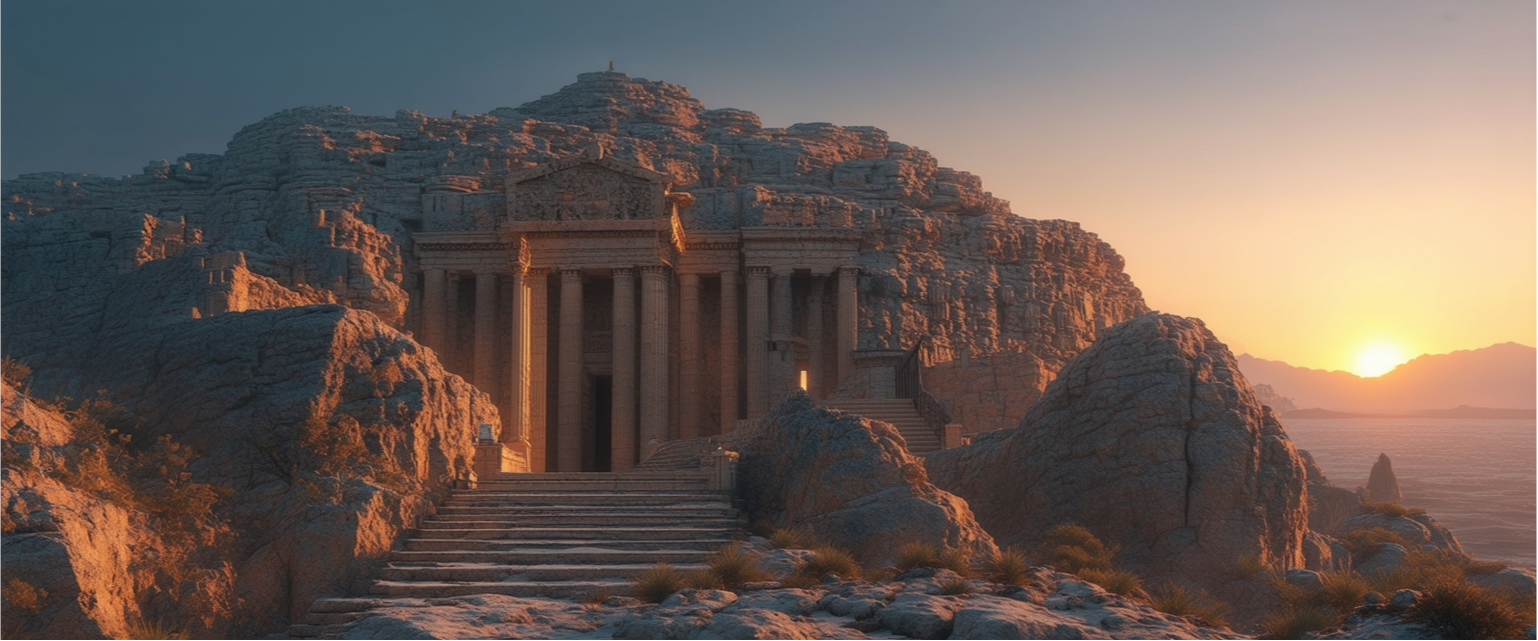From Torah to Trinity: Tracing the Origins of Belief
Before there was a church, there was a people. Before the New Testament was compiled, the Hebrew Bible told of covenants, deliverance, law, exile, and restoration. Christianity was not born in a vacuum—it evolved out of Judaism and the many questions people asked when encountering the divine. To understand the Christian faith, we must trace the arc from Abraham to Jesus (Yeshua), and beyond—to the lost gospels, suppressed voices, and traditions sidelined by institutional theology.
The modern canon didn't just fall from the sky. It was debated, fought over, and curated—a historical process driven by politics, empire, and a desire for unity. By the time of the Council of Nicaea in 325 A.D., much of what is now accepted as "orthodox" was locked in, while other texts—deemed heretical or inconvenient—were buried, lost, or destroyed.
Why Include Other Traditions?
This ministry draws from Biblical canon but also looks beyond it—not to distract, but to reveal what early followers understood: truth has many witnesses. Whether it's the Book of Enoch, the Gospel of Thomas, or even Buddhist and pagan parallels, these aren't contradictions—they're clues. Wisdom is a global phenomenon, and human spirituality has always asked the same questions: Who are we? Who is God? Why do we suffer? What saves us?
The Roots: Jewish Faith and the Covenant
Judaism begins with Abraham and a promise—of land, people, and a relationship with the divine. The Torah (first five books of Moses) lays the foundation of law and moral clarity. Through centuries of exile and return, prophets called Israel back to God. Concepts like Shekinah (divine presence) and the Ruach (Spirit) echo into Christian and mystical thought.
The Canon: Who Decided What Belongs?
The word "Bible" means "library"—but who chose the books? Councils between the 4th and 6th centuries determined what was in, and what was out. Texts like 1 Enoch, quoted in Jude 1:14, were respected by early Christians but later excluded. Gospels like Mary, Philip, and Thomas offer alternate views of Yeshua, emphasizing inner knowledge (gnosis) over church hierarchy.
Catholicism and the Empire
With the conversion of Emperor Constantine, Christianity went from underground movement to imperial religion. This changed everything. Bishops gained political power, pagan festivals were rebranded, and theological uniformity became law. What began as a revolution of the heart became a system of control—one that many reformers, mystics, and prophets tried to challenge over the centuries.
Gnostic and Mystical Currents
Gnostic texts—unearthed in 1945 at Nag Hammadi—present a radically different lens. Here, the Divine is mysterious, multi-layered, and feminine as well as masculine. God is the unknowable source; Sophia (Wisdom) is the fallen aspect seeking redemption. Yeshua is a revealer, not a martyr to appease wrath, but a guide to awaken the divine spark within.
Why This Approach?
In street ministry, we meet people who’ve been burned by religion but still hunger for truth. They need more than slogans—they need permission to question. This ministry doesn’t preach conformity; it encourages critical faith. That means going beyond tradition to ask: what did the earliest believers know? What did the councils silence? And how can we apply divine wisdom—not just church dogma—to our lives today?
April 29th — Whether in sacred spaces or digital corners of the world, this ministry welcomes seekers—not just believers. By journeying through the Jewish foundations of faith, rediscovering lost and Gnostic gospels, and shedding light on forgotten traditions, we invite a deeper, more discerning understanding—biblical, but never blind. In our next exploration: "Understanding the Godhead: Father, Spirit, and Son", we delve into the Divine Masculine as presented in mainstream Christianity—and question what was left behind when the feminine face of the divine was silenced in canon formation.
Ministry Notes
April 29th — To preach with power in today’s world, we need more than one source of light. Biblical truth shines brightest when we remove the filters placed on it by centuries of human control. Let the Word speak freely—and let wisdom, even from unlikely places, remind us what sacred means.
In addition to the truths unearthed here, I will be curating a separate series under the title Mysti's Magazine—an exploration of sacred femininity, the celebration of the woman's form, spirit, and power, stripped of the shame imposed by religious tradition.
Mysti’s Magazine will walk where few dare tread—honoring the body as a temple of both passion and purpose, and rejecting the dogmas that have long sought to chain womanhood under the weight of guilt. It will speak without apology. It will celebrate without shame.
Both works, though different in focus, spring from the same source: a relentless pursuit of authenticity. A return to what is holy because it is human, not because it has been sanitized for approval.
The gatekeepers of tradition may call it heresy. I call it truth.
Guided by the foundational question instilled by my father and reinforced by my mother—What are you not being told, and why?—I refused to accept surface-level teachings. I sought the forbidden paths, the suppressed texts, and the silenced voices.
From a young age, it was clear: the fairy tales and sanitized Bible stories taught in both Catholic and Protestant circles were hollow echoes of a deeper reality. When countless religions, denominations, and cults each claim divine authority—often at the cost of blood and land, justified by invoking the will of God—the honest seeker must ask:
What has been hidden? What sacred truths were sacrificed to power?
In this blog, I go beyond the sanctioned boundaries set by church leadership. I will expose the veiled history they condemned as heresy—and illuminate the vast spiritual landscape they fear you will discover.
